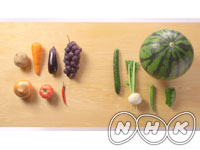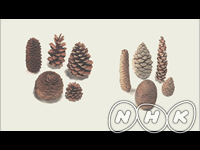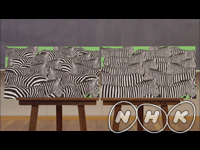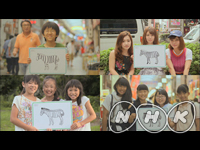TV Station NHK
 Viewpoint Science | Try to Sort Them
Viewpoint Science | Try to Sort Them
ED301808![]()
仲間分けしてみる [NHK]
![]()
![]()

|Length : 10 |Year : 2018 |
Carrots, grapes, okra, eggplant, watermelon, radishes, cucumbers… Various fruits and vegetables. What interesting stuff will you find when you try to sort them into groups?
 Viewpoint Science | Describe It in Words
Viewpoint Science | Describe It in Words
ED301807![]()
コトバにしてみる [NHK]
![]()
![]()

|Length : 10 |Year : 2018 |
Let’s describe something familiar. It’s white and oval-shaped. One end is a little bit pointed. What is it?
 Viewpoint Science | Look Underneath
Viewpoint Science | Look Underneath
ED301806![]()
下から見てみる [NHK]
![]()
![]()

|Length : 10 |Year : 2018 |
If we look at various creatures from underneath, maybe we'll find something fascinating. How do such creatures as snails and sea snails move?
 Viewpoint Science | Try Comparing
Viewpoint Science | Try Comparing
ED301705![]()
比べてみる [NHK]
![]()
![]()

|Length : 10 |Year : 2017 |
We look at a variety of different pinecones. When we compare them, we discover all sorts of interesting stuff.
 Viewpoint Science | Try Drawing It
Viewpoint Science | Try Drawing It
ED301704![]()
描いてみる [NHK]
![]()
![]()


|Length : 10 |Year : 2017 |
The star of this episode is the zebra. What do a zebra’s stripes look like? Can you draw them from memory? After you try, look at a picture of a zebra—the stripes are probably more complicated than you think!














